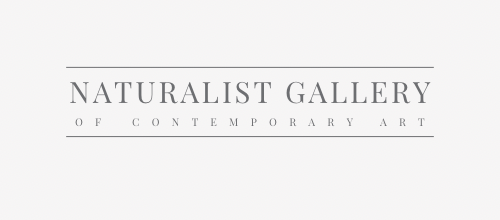Investing in art has become increasingly popular, offering a unique blend of passion and potential profits.
Art investment offers a blend of passion and profit. Art's long-term reliability, diversification benefits, and potential for appreciation make it an appealing asset class. Seek expert advice and set clear goals to maximize returns.
This guide will explore why art is a valuable investment, the benefits of diversifying your portfolio with art, and how to get started as a beginner in the art market.
Explore our curated selection of contemporary artists from around the globe.
Naturalist Gallery offers artist representation internationally. Apply your art.

Section 1: Why Art is a Valuable Investment
1.1 Long-term Reliability: Art's value tends to appreciate over time, making it a stable long-term asset.
1.2 Non-liquid Asset: Understanding the importance of art's non-liquid nature and its role in a diversified portfolio.
1.3 Passion & Prestige: Investing in art based on personal interest and the unique allure of art's prestige.

Section 2: How to Invest in Art
2.1 Set Clear Goals: Determining investment objectives and balancing profit-seeking with personal enjoyment.
2.2 Research & Expert Advice: Identifying the type of art that resonates and seeking guidance from art professionals.
2.3 Budgeting: Setting a budget aligned with your investment goals and considering potential returns.
2.4 Making Informed Decisions: Ensuring investment grade art and personal satisfaction with each acquisition.

Section 3: Types of Art Investment
3.1 Emerging Artists: Assessing the risk and potential rewards of investing in up-and-coming artists.
3.2 Established/Mid-Career Artists: Balancing risk with higher price points and consistent returns in mid-career artists.
3.3 Blue Chip Artists: Understanding the significant investment required and the assurance of well-known names.

Section 4: Where to Find Investment Grade Art
4.1 Contemporary Art: Utilizing online platforms like Artnet and Artsy for contemporary art acquisitions.
4.2 Historical Pieces: Exploring auction sites like Bonhams and Christie's for more traditional artworks.
4.3 Expert Guidance: Emphasizing the importance of art advisors to navigate the vast art market.

Section 5: Best Times to Invest in Art
5.1 Market Timing: Investing in art during price dips and selling during market highs for optimal returns.
5.2 Emerging Artists: The early investment opportunities in emerging artists with potential for significant growth.
5.3 Established Artists: Investing in established artists with steady returns and lower risk.
5.4 Blue Chip Artists: Considering high upfront investment for assured returns in renowned artists.

Section 6: Downside of Art Investment
6.1 Lack of Liquidity: Acknowledging the challenges of selling art quickly due to its non-liquid nature.
6.2 Counterfeit Art: Understanding the risks associated with counterfeit artwork and the importance of reputable dealers.
6.3 Storage and Insurance: Managing the additional costs of storing and protecting valuable art pieces.

Section 7: Alternative Art Investment
7.1 Art Funds: Exploring art-specific funds to invest in blue-chip art managed by experts.
7.2 Fractional Shares: Accessing art investments with smaller amounts through platforms like Maecenas and Masterworks.
7.3 Digital Art and NFTs: Participating in the booming digital art market through NFT platforms and marketplaces.
7.4 Related Stocks: Investing in companies supporting the art market to benefit from its growth.
View limited edition prints by contemporary artists at Naturalist Gallery.
Investing in art can be a rewarding journey, combining personal passion with financial gains. By setting clear goals, conducting thorough research, and seeking expert advice, beginners can confidently navigate the art market. Embracing the diversification benefits and long-term potential of art investments can add lasting value to any portfolio.
You may also find the following articles helpful:
The Fine Art Enthusiast's Guide
How to Become an Art Collector
Art Criticism: Evaluating Contemporary Art
Art Consultants in the Contemporary Art World
The Art Advisor's Guide: Navigating the Art Market
How Art Agents Work with Contemporary Artists



